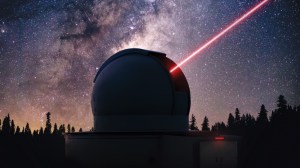Exploration of the Moon and Mars requires the power of human imagination and vision. It also takes the power of electricity to bring science and technology to life when astronauts land and stay on the surface.
NASA has plans for a robust presence on the Moon under Artemis and eventually Mars, including the development of a fission surface power system for safe, efficient, and reliable electrical power. Fission surface power – in conjunction with solar cells, batteries, and fuel cells – can provide the power to operate rovers, conduct experiments, and use the Moon’s resources to produce water, propellant, and other supplies for life support.
“Plentiful energy will be key to future space exploration,” said Jim Reuter, associate administrator for NASA’s Space Technology Mission Directorate (STMD) in Washington, which funds NASA’s fission surface power project. “I expect fission surface power systems to greatly benefit our plans for power architectures for the Moon and Mars and even drive innovation for uses here on Earth.”
NASA, in coordination with the Department of Energy (DOE), is asking American companies for design concepts for a fission surface power system that could be ready to launch within a decade for a demonstration on the Moon. The system should be capable of autonomous operation from the deck of a lunar lander or a lunar surface rover.
Why fission?
- It’s reliable. Fission systems can operate continuously around the clock in shadowy craters and during the weeks-long lunar nights, when power generation from sunlight is difficult.
- It’s powerful. The systems NASA is asking companies to design would provide at least 40 kilowatts of power, enough to continuously power 30 households for ten years.
- It can be compact and lightweight. Systems like these could someday provide enough power to establish an outpost on Mars.
What’s Next?
“NASA and the DOE are collaborating on this important and challenging development that, once completed, will be an incredible step towards long-term human exploration of the Moon and Mars,” said Fission Surface Power Project Manager Todd Tofil at NASA’s Glenn Research Center in Cleveland. “We’ll take advantage of the unique capabilities of the government and private industry to provide reliable, continuous power that is independent of the lunar location.”
Fission surface power technologies will also help NASA mature nuclear propulsion systems that rely on reactors to generate power.
NASA and the DOE (through the Idaho National Laboratory operated by Battelle Energy Alliance) will select competing U.S. companies to develop initial designs over a 12-month period. The resulting designs will inform an industry solicitation for the final design and build of a flight-qualified fission power system to send to the Moon on a demonstration mission.
NASA’s fission surface power project is managed by NASA’s Glenn Research Center in Cleveland. The technology development and demonstration are funded by the Space Technology Mission Directorate’s Technology Demonstration Missions program, which is hosted at Marshall Space Flight Center in Huntsville, Alabama.
Nancy Smith Kilkenny
NASA’s Glenn Research Center






























